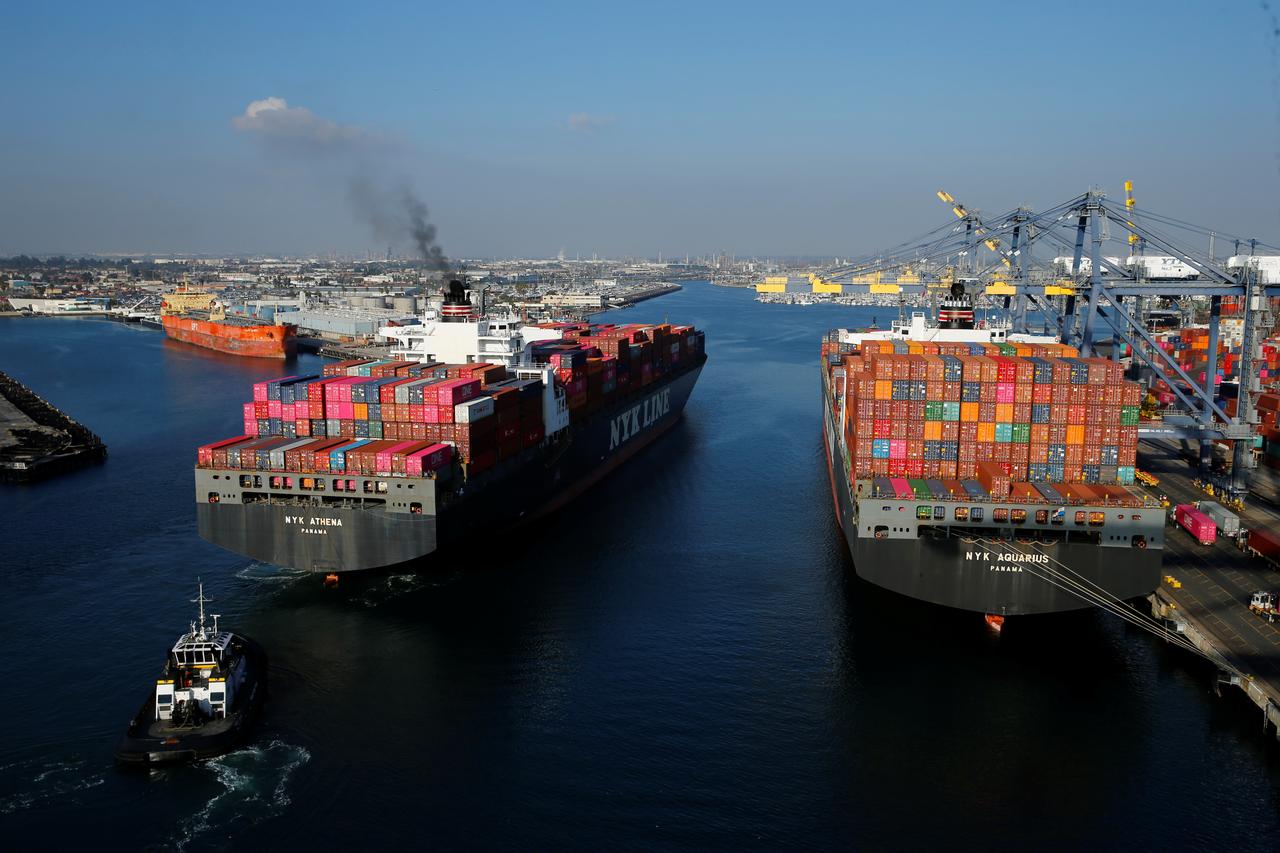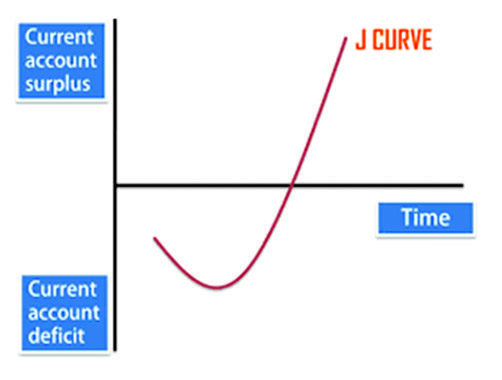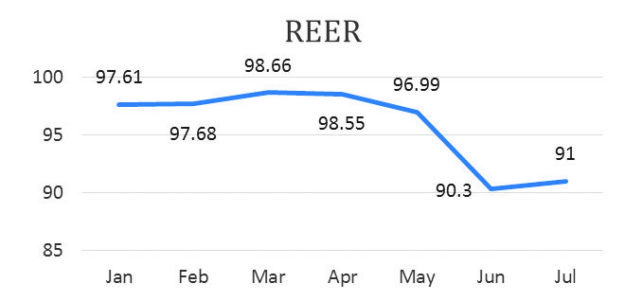
The country has compromised on other macroeconomic goals such as low unemployment and low or stable inflation in order to reduce the current account deficit.
Pakistan received encouraging news on this front as the current account deficit narrowed to $579 million in July 2019, which was almost a fourth of the deficit recorded in July 2018 ($2.13 billion).
In order to explain this improvement, let us take help of the economic concept of J-curve.

According to the J-curve theory, initially the current account deficit increases slightly following devaluation of the currency but eventually this trend is reversed and improvement comes after six to eight months. This time lag occurs because imports and exports get adjusted with a lag. Imports slow down and exports gain momentum but the change does not take place immediately.
The improvement in the level of the deficit has been reflected in an improvement in value of the currency as well. Pakistan rupee strengthened against US dollar in August 2019 and traded at 156.75 against July close of 159.75.
The market expects the rupee to appreciate further in September based on the Real Effective Exchange Rate (REER) index of 91.0. This expectation will be strengthened if the current account deficit for the month remains under control. The above improvements are commendable but the economic team has faced a lot of criticism while trying to achieve this. Nevertheless, the improvement in the external sector is a feather in its cap. However, this victory of the economic team must be translated into long-term success and to achieve that, there is a long journey ahead.

Imports have been choked and import-oriented businesses have paid a huge cost for bringing improvement in the external sector. Several entrepreneurs have to shut down their businesses, which resulted in the loss of many jobs.
However, export volumes have not exhibited any plausible improvement, which is the biggest challenge. Without increasing exports, the victory on the external front is nothing but an illusion.
Increasing exports is a long but truly rewarding journey. The country needs to take the following measures in order to increase exports. The biggest problem with export-oriented businesses is that they are already operating at full capacity, hence, devaluation alone is not the solution. Policymakers must incentivise investment in the export-oriented business.
Government is already providing subsidised financing through the State Bank of Pakistan (SBP) schemes, however, the country needs more than that.
Secondly, the government needs to focus on non-traditional exports. Pakistan exports mainly comprise of textile and rice. The government must put in efforts to diversify exports and increase incentives for the export of high value-added goods and services. I have always remained a great advocate of increasing the export of services and still believe we are not leveraging the internet up to its potential.
Import substitution is also synonymous to export. On the other hand, using solar and other forms of alternative energy for households and commercial sector is something which has not been considered aggressively.
The biggest problem in the power sector that remains unresolved is the line losses and massive investment is required in infrastructure to arrest the losses. The line losses are also primary contributors to the high cost of doing business in Pakistan, which turns the country’s exports uncompetitive. But if households and the commercial sector switch to solar energy, the problem of line losses will automatically get resolved. Businesses will get uninterrupted power supply and cost economics of this decision will be very lucrative.
Furthermore, this switch to solar energy will have a positive impact on the environment as well. It will also improve Pakistan’s external sector and the resulting reduction in the deficit will be much more sustainable and robust.
To summarise, it must be reiterated that the reduction in current account deficit is indeed an outstanding achievement of the economic team. However, the real victory will be a sustainable increase in exports through an increase in capacity, diversification of the export portfolio and reduction in the cost of doing business.
The writer is a treasury dealer and teaches economics
Published in The Express Tribune, September 23rd, 2019.
Like Business on Facebook, follow @TribuneBiz on Twitter to stay informed and join in the conversation.






1719053250-0/BeFunky-collage-(5)1719053250-0-270x192.webp)










COMMENTS (2)
Comments are moderated and generally will be posted if they are on-topic and not abusive.
For more information, please see our Comments FAQ